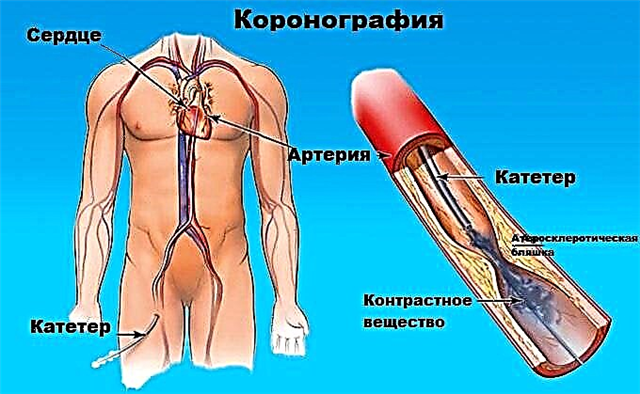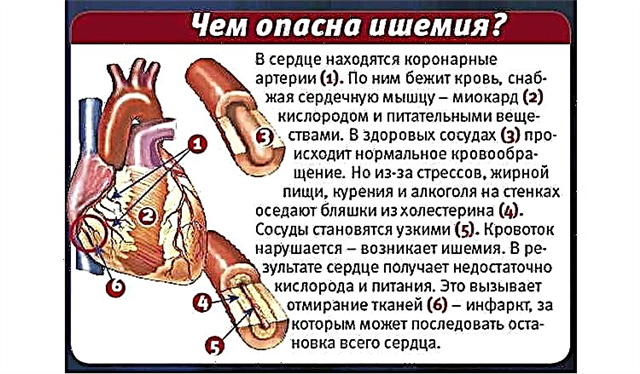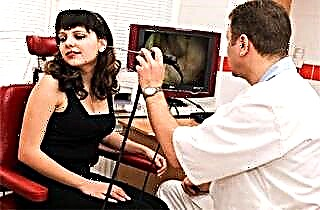Hyperemia (redness) of the skin is one of the signs of inflammation of the epidermis and the blood vessels in it. How to get rid of a red nose? Persistent discoloration of the skin may indicate the development of infectious, dermatological and allergic diseases. For the treatment of the first, antimicrobial and antiviral agents are used, the second - hormonal, and the third - antihistamines.
Redness most often indicates excessive blood filling of the arterioles (small capillaries), which permeate the dermis. The process can be provoked by infectious inflammation, irritation, parasitic infections, hormonal disorders and exogenous factors - temperature differences, low-quality cosmetics, UV radiation, mechanical peeling, etc. The article discusses the causes of hyperemia of the tip and wings of the nose, as well as the main methods of treating diseases.
Causes
Why is the nose red? Temporary flushing of the skin can be caused by factors of a reflex nature. In particular, a sharp temperature drop leads to a rapid expansion of blood capillaries and, accordingly, a change in the color of the skin. Temporary redness of the tip of the nose does not require medication or physiotherapy.
 In some cases, tissue hyperemia is a symptom of the development of rather serious diseases, which include:
In some cases, tissue hyperemia is a symptom of the development of rather serious diseases, which include:
- rosacea;
- rhinophyma;
- demodicosis;
- seborrheic dermatitis;
- rosacea;
- allergy;
- herpes;
- sycosis.
Severe redness of the nose may indicate the development of a number of background pathologies that require medication or physiotherapy.
If a person's nose turns red constantly, it is necessary to determine the cause of tissue hyperemia. The treatment methods for allergic, skin and infectious diseases differ significantly. Allergic manifestations are relieved with antihistamines, infection with antibiotics or antiviral drugs, and skin pathologies with topical corticosteroids, antimicrobial and antiseptic agents.
Treatment of dermatological diseases
Before removing redness from the nose with an anti-inflammatory ointment or cream, you need to determine the true cause of the skin discoloration. It should be understood that the elimination of the symptom will not in any way affect the rate of development of the pathology and therefore can lead to very disastrous consequences. Treatment of skin diseases involves the use of a whole arsenal of medications that directly affect the cause of the deterioration of the dermis.
Vitamin therapy
If the pink color of the skin is a consequence of tissue inflammation or a violation of the processes of their keratinization, fortified agents are included in the treatment regimen. To restore the functions of the dermis and eliminate inflammatory reactions, the following are used:
| Vitamins | Operating principle | Indications for use |
|---|---|---|
| retinol (vitamin A) | accelerates the regeneration of epithelial tissues | acne, psoriasis, eczema, Raynaud's disease |
| tocopherol (vitamin E) | removes toxic substances and strengthens the immune system | Sycosis, skin allergy, seborrheic dermatitis |
| ergocalciferol (vitamin D2) | normalizes the digestive tract, accelerates the absorption of nutrients by the intestines | ulcerative tuberculosis of the skin, vasculitis, scleroderma, rhinophyma |
| biotin (vitamin H) | takes part in the synthesis of carbohydrates and fats, accelerates collagen production | Dermatitis, dry skin, eczema |
| nicotinic acid (vitamin PP) | reduces the concentration of cholesterol in the blood, removes harmful substances from tissues | Pellagra, rosacea, rosacea, dermatitis |
Important! Irrational use of vitamins is fraught with hypervitaminosis, i.e. poisoning with biologically active substances.
Antibacterial therapy
How are skin infections treated? If nasal congestion was caused by erysipelas, sycosis or bacterial dermatosis, antimicrobial drugs are included in the therapy regimen. You can stop inflammatory reactions in the skin with the help of such pharmacy tools:
- semi-synthetic penicillins - Augmentin, Ampicillin;
- biosynthetic penicillins - "Penicillin", "Benzylpenicillin";
- cephalosporins - Rocefin, Kefzol;
- tetracyclines - Rulid, Rovamycin.
It is important to remember that an antibiotic that removes inflammation can provoke side reactions. In particular, the irrational use of drugs leads to dysbiosis, diarrhea, urticaria, mycoses.
Hormone therapy
Treatment of most dermatological diseases involves the use of hormonal agents. They have a pronounced antiphlogistic (anti-inflammatory) and wound healing effect. Permanent therapy with corticosteroids can stop the manifestations of pathology and restore the functions of the epidermis.
To prevent the further development of toxicoderma, eczema and atopic dermatitis, use:
- Triamcinolone;
- "Prednisolone";
- Sanalar;
- "Flucinar";
- Dexamethasone.
Long-term use of steroid hormones can lead to degeneration of adipose tissue and acne.

Before making your choice in favor of corticosteroid drugs, you need to consult your doctor. To prevent the development of potassium deficiency, the patient will be prescribed suitable potassium preparations - "Panangin", "Potassium acetate", etc.
Herpes treatment
What to do if there is a burning sensation in the reddened areas of the skin. Itching and burning in the area of the nasolabial fold and the vestibule of the nose most often indicates the development of herpes simplex. Even before the appearance of liquid-filled bubbles, a person feels discomfort at the site of localization of a viral infection. Antiviral ointments and pills help to stop the unpleasant manifestations of the disease.
Antiviral drugs
The rapid progression of the disease is a strong reason for taking systemic antiviral drugs. With their help, you can suppress the activity of the virus and prevent damage to new areas of the skin and nasal mucosa. Treatment of herpes simplex consists in the use of the following pharmaceutical agents:
- "Genferon";
- Valtrex;
- Zovirax;
- Valacyclovir;
- "Viferon".
With frequent relapses of herpes, it is recommended to take immunomodulatory drugs - "Taktivin", "Immunoriks", etc. "Genferon" and "Viferon" have a pronounced immunostimulating effect. They accelerate the synthesis of interferon, which prevents the multiplication of viruses and their penetration into the skin and nasal mucosa.
Herpes ointment
 Local preparations - antiviral gels and ointments - help to eliminate redness in the nasal area. Their components are quickly absorbed into the tissues, due to which the activity of virions is suppressed and, accordingly, the manifestations of the disease - itching, hyperemia. The following medications can help ease the course of herpes:
Local preparations - antiviral gels and ointments - help to eliminate redness in the nasal area. Their components are quickly absorbed into the tissues, due to which the activity of virions is suppressed and, accordingly, the manifestations of the disease - itching, hyperemia. The following medications can help ease the course of herpes:
- Zovirax;
- Panavir;
- Viru-Merz;
- "Zinc ointment";
- Erazaban.
Using the ointment before blistering occurs will help prevent further infection.
Today, medicine cannot offer medicines that can completely destroy the herpes virus in the body. Therefore, with a relatively mild course of the disease, it is recommended to limit the use of only external preparations.
Skin allergy treatment
Allergy is a consequence of an inadequate response of the immune system to irritating substances - plant pollen, gassed air, strong odors, cosmetics, etc.The development of the disease is accompanied by the release of histamine from the so-called mast cells. Histamine is one of the main mediators of inflammation, therefore, an increase in its concentration in tissues leads to inflammation and, accordingly, redness of the nose. For the treatment of skin allergies, antihistamines are always used - tablets, gels, ointments, suppositories, injections, etc.
Antiallergic drugs
For the quick and effective elimination of allergic reactions in the body, drugs of etiotropic and palliative action are used. A pleasant addition is the availability of individual descriptions of all machines, which will allow beginners and avid gamblers to get acquainted with the well-deserved classics or innovation in the field of gambling. A reliable provider for playing your favorite slot machines is the Casino X site, since I have been playing in this club for a year now and do not plan to change. But the chances of winning seriously increase, and even a beginner can simply register on the service and play for money, replenishing his wallet with prize money. The most normal casino today. The first ones directly affect the cause of the redness of the nose, and the second ones eliminate the manifestations of the disease. To eliminate redness, itching and flaking of the nose will help:
- "Kestin";
- Erius;
- Tavegil;
- Telfast;
- "Suprastin".
In severe allergies, patients are prescribed hormonal agents - "Prednisolone", "Betaspan", "Dekson".
The above drugs can be used to treat allergic inflammation not only on the skin, but also in the nasal mucosa. That is why it is recommended to use them in the treatment of hay fever, allergic rhinitis and dermatitis.
Allergy ointments
External preparations successfully cope with local manifestations of allergies, i.e. redness of the nose and itching. Depending on the severity of the course of the disease, the treatment regimen includes either non-hormonal drugs or steroid hormones:
- non-hormonal ointments ("Pantoderm", "Videstim") - eliminate dry skin, burning, itching, swelling and hyperemia;
- glucocorticosteroids ("Advantan", "Flucinar") - relieve inflammation and accelerate the restoration of the epidermis.
Non-hormonal agents are widely used in pediatric practice, since they practically do not cause adverse reactions. Tonic corticosteroids are commonly used to treat allergies, dermatitis, and psoriasis in adults.
Conclusion
A red nose is most often the result of a skin, allergic, or infectious disease. The methods of treating pathologies have significant differences, therefore, it is advisable to be examined by a doctor before using pharmacy products. Skin pathologies are treated mainly with vitamins, steroid hormones and antibiotics. For infectious skin lesions on the nose, antiviral and antimicrobial drugs are used, and manifestations of skin allergies can be eliminated by antihistamines and topical corticosteroids.



